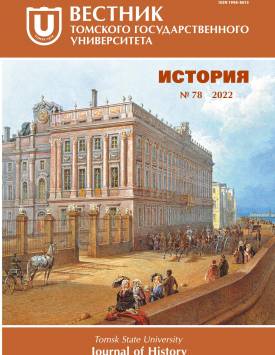Al-mu 'rib 'an bad ayd'ib al-Maghrib and Tuhfat al-albab wa nukhbat al-a’jhab by abu Hamid al-Gharnati as sources on the history and religious practice of Dagestani people in the 12th century: comparative analysis
This paper provides new information on the 12th century history of Dagestan on the basis of translation, commentary and comparative analysis of excerpts in relation to the history of Caucasian people from the works of Abu Hamid al-Gharnati (d. 1170) - an Andalusian traveller from Granada who travelled around eastern and central Europe -al-Mu'rib 'an ba'd ayd'ib al-Maghrib (“Clear Exhibition of Some Wonders of the West”) برغملا بئاجع ضعب نع برعملا and Tuhfat al-albab wa nukhbat al-a’jhab (“Gift of Secrets and Selection of Wonders”) تحفة الألباب ونخبة الإعجاب . His travel observations and impressions, including through the medieval Dagestani polities, formed the basis of the given works in Arabic which are related to cosmography and descriptive geography genre. From al-Gharnati we learn a lot about spectacular places and things in Dagestan, particularly, reports on the Derbent ruler in the 12th century, Zoroastrian funeral ritual practiced in Zerekhgeran, the Muslim educational and social work in Lakzan, moreover, his reports which are confirmed by the data of other Arab geographers show the accuracy of his historical geography description and travel observation of the eastern Caucasus. It’s noteworthy that Mu'rib adds relatively little to the material of Tukhfat al-albab, but the comparison of both texts turns out to be very useful for the mutual verification and comprehension, particularly, the reports from both sources on Derbent and two islands in the Caspian Sea are overlapping. As for the information about Dagestan given by al-Gharnati so it’s largely original. The paper discusses the main aspects of life and scholarly activities of al-Gharnati who was an expert in Islamic law and Arabic historiography. It also compared O.G. Bolshakov’s translation of passages from al-Gharnati’s works on the eastern Caucasus to find out whether his version contains interpretative flaws. Both works of al-Gharnati can be considered as a useful guide not only on historical and geographical issues, but also to the same extent on religion, culture, ethnology, folklore, especially those reports associated with Eastern Europe, including the North Caucasus, in particular, Dagestan. Moreover, I compared some reports on Dagestan from Muruj azzahab of al-Mas‘udi, Kitab Al-Futuh of al-Kufi, and al-Gharnati’s works in order to find out whether the origin of the material is the same. The results of this research can further source study in writing the medieval history of eastern Caucasus. The author declares no conflicts of interests.
Keywords
medieval Dagestan, Al-Mu'rib 'an ba'dayd'ib al-Maghrib, Tuhfat al-albab wa nukhbat al-a’jhab, al-Gharnati, source studyAuthors
| Name | Organization | |
| Gizbulaev Magomed A. | awariyav@gmail.com |
References

Al-mu 'rib 'an bad ayd'ib al-Maghrib and Tuhfat al-albab wa nukhbat al-a’jhab by abu Hamid al-Gharnati as sources on the history and religious practice of Dagestani people in the 12th century: comparative analysis | Tomsk State University Journal of History. 2022. № 78. DOI: 10.17223/19988613/78/17
